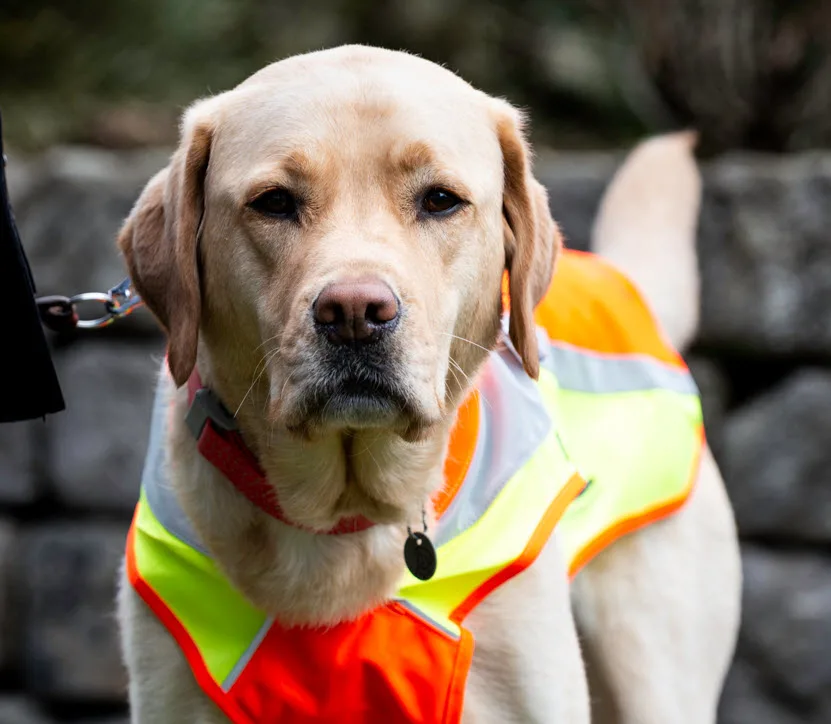24th April 2024
24th April 2024
This news article is more than a year old
International Day of Guide Dogs
International Day of Guide Dogs is being celebrated worldwide today, 24 April. In recent years, the number of guide dogs has increased steadily and we can expect to see a further increase in the number of guide dogs in the coming years. In May, the number 22 guide dog is expected to arrive in Iceland, of which 13 are currently active. We would like to use this day to shed light on the way guide dogs interact with people.

All guide dogs love to go to their own bowels and work alongside their users. Dog and man are then teams that work together to solve the task that is in the way. Guide dogs are selected for this project because of their qualities. The qualities of good guide dogs are good work instinct, adaptability and stability in temperament. They are in nature sweet and humane which is one of their biggest advantages but can sometimes be a hurdle for them.
Most people know that they can’t interfere with a guide dog when he is in his workstation. Then he is at work and needs to focus on the task he is assigned. It is important to limit all contact with a guide dog when he is in the workstation. Smiles, extending a hand, kneel and talking to a guide dog can cause him to lose his focus and think that there are invitations to approach the person. Users of guide dogs do not have the opportunity to see if passers-by interact with their dogs. It is therefore vital that people show consideration to guide dogs and users in their daily contact with them.
If a guide dog has to be met with another dog, special care must be taken.
Guide dogs are trained to stay on the left side of the pavement, paths and sidewalks when they assist their users and therefore it is important to give them the opportunity to do so. It is important to give the guide dog and the dog in question space to meet each other without disturbing each other. Dogs should be in the loop or under the full control of their owner in the town and only free in areas where this is allowed.
When dogs meet a guide dog, it is preferable to do so by shortening the fleximeter and having the dogs meet on the “distant side” i.e. with the owners between them. So-called fleximeters often give the dogs the opportunity to walk in considerable distance from their owner and not under control and it can be difficult to know what is beyond the next corner or next turn. Please keep that in mind.
If you notice that a guide dog is losing its focus due to your presence or because the circumstances do not offer the opportunity to maintain a distance, it is good to let the guide dog user know that you have a dog and at the same time try to increase the distance between you if possible.
Never let a dog go to say hello to a guide dog while he is working. This can pose a risk to the guide dog user and to the dogs themselves.
If a guide dog doesn't have a harness and you're wondering if your dog can say hello, you should probably ask the user if he can.
It is very difficult to control a dog without full eyesight and it is therefore necessary to be considerate and polite. Set yourself in the shoes of blind or visually impaired people and use guide dogs to navigate their environment. It is easy to imagine how difficult it can be for both the user and the guide dog to meet other dogs if the above factors are not taken into consideration.